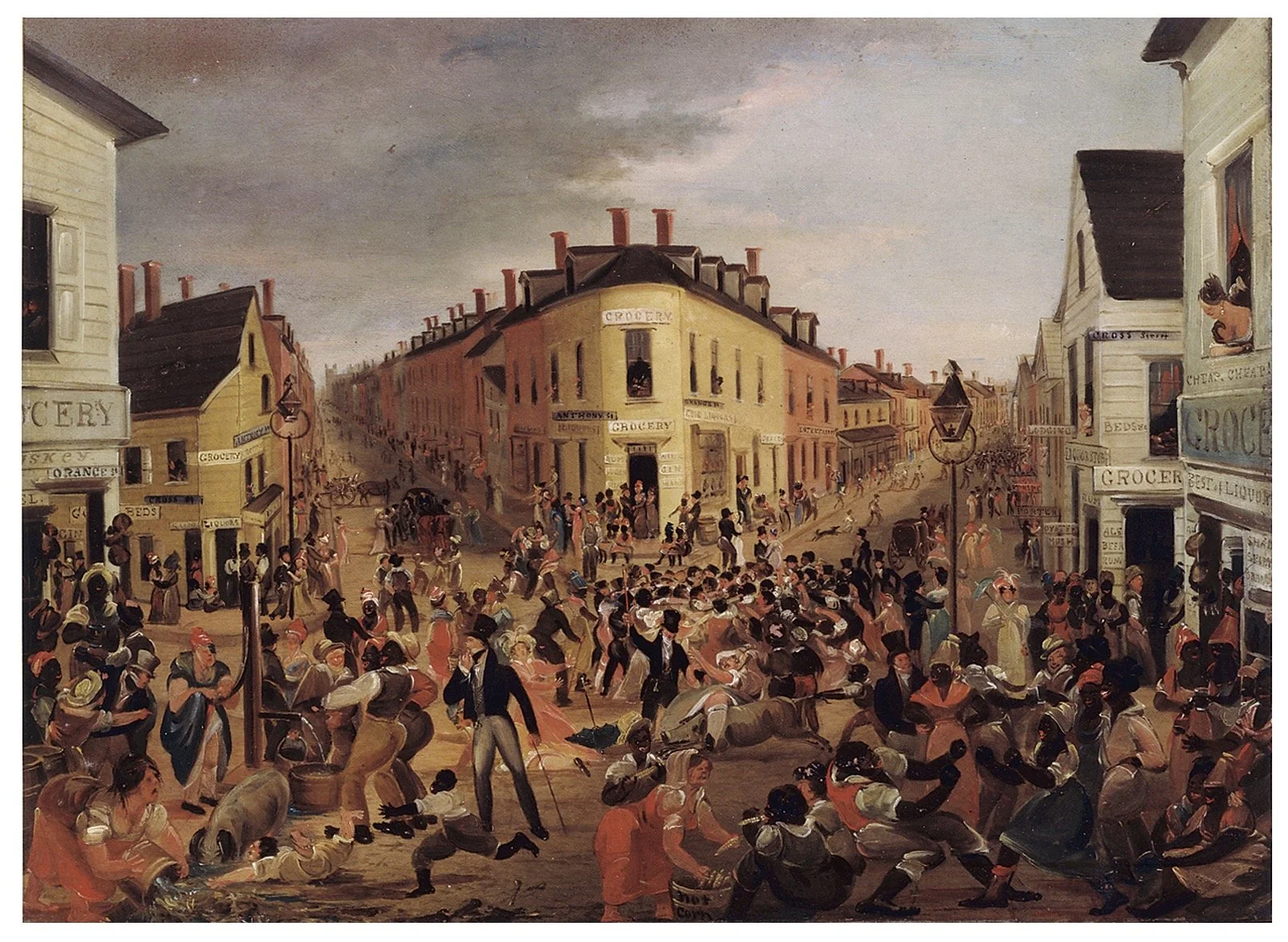Five Points: Nineteenth-Century New York’s Most Infamous Neighborhood
This three-session class will separate fact from fiction in the history of Five Points, nineteenth-century New York’s most infamous neighborhood. The first session will look at the creation of Five Points in the 1820s, why it so quickly became a poor, decrepit interracial neighborhood, and how it soon gained international renown. The second session will focus on the impact of the Irish Potato Famine on Five Points, as thousands of destitute famine refugees flooded into the neighborhood and stretched its resources to (and in some cases beyond) their limits. The final session will look at the transition of Five Points from an Irish neighborhood to an Italian and Chinese enclave and also the razing of the heart of the enclave, Mulberry Bend, at the turn of the twentieth century at the behest of muckraker Jacob Riis. From that point forward, Five Points became a fading memory, all but forgotten until Martin Scorsese’s Gangs of New York revived interest in it. The class will end with a discussion of the film and what it tells us about historical memory and popular culture.
Tuesdays, 5:30-7:00 PM
September 30-October 14
$125 (3 sessions)
Meet your instructor
Tyler Anbinder
Tyler Anbinder is an emeritus professor of history at George Washington University, where he taught courses on the history of American immigration and the American Civil War era. He is the author of three award-winning books: Nativism and Slavery: The Northern Know Nothings and the Politics of the 1850s (1992); Five Points: The Nineteenth-Century New York Neighborhood that Invented Tap Dance, Stole Elections, and Became the World’s Most Notorious Slum (2001); and City of Dreams: The 400-Year Epic History of Immigrant New York. Anbinder has won fellowships from the National Endowment for the Humanities and served as the Fulbright Thomas Jefferson Distinguished Professor of History at the University of Utrecht. His fourth book, Plentiful Country: The Great Potato Famine and the Making of Irish New York, was published in March 2024.

